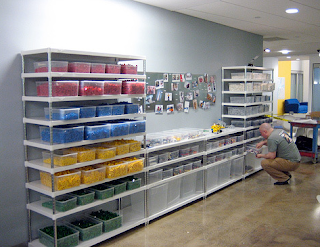 |
| VMDO Architects' Design Diagram |

A few dollars became available for classroom furniture recently. During my tenure, furniture has not been a consideration. Typically teachers brought in interesting tables, chairs and other objects from yard sales. Sadly, those "yard sale" pieces were often removed by fire officials since they didn't meet the fire codes. We also waited for a teacher with a desired piece of furniture to retire so we could inherit a treasured piece. That was the case for me when it came to a paper drawer. I always wanted one, and finally inherited one about ten years into my teaching career.
Now with a few dollars available to replace broken chairs, old desks and needed tables, I'm wondering what's the best decision to make with regard to that money. Do we simply replace what we've been using for decades, or do we think deeply about creating learning environments that match our 21st century learning goals and practices? Tom Whitby has written about this many times and prompted this post.
As you may guess, I want to rethink the classroom environment, and make sure that our purchases support our learning priorities: literacy, numeracy, project base learning in content areas, multi-modal instruction, and 21st century skills: creativity, collaboration, communication and critical thinking skills. A materials short list might include the following:
- Comfortable seating for reading, writing and thinking work.
- Collaborative spaces for small book groups, RTI, and project teams.
- Whole class meeting area for shared books, discussions, meetings and audio/video shares.
- Classroom libraries with book shelves for hard copies and storage spaces for digital equipment: iPods, laptops, iPads, earphone, and more.
- Bulletin boards and white boards for display and collaborative work.
- Large screen computer(s) and/or white board(s) for presentation.
- Paper drawers for posters, paper and project materials.
- Storage cabinets and containers for hands-on learning materials.

As I think aloud, I hope that our school will move towards greater RTI: targeted instruction in small, focused groups throughout the day in all subject areas. That means our large one-size-fits-all spaces will become spaces that accommodate many learning groups and teachers at once while still leaving areas for larger group presentations and shares.
 |
| People Pads A dedicated colleague wrote a grant to fund a number of these Hoki stools for our school. The students really like sitting on these wonderful stools. |
Last night, I spent a long time searching the web for interesting classroom furniture and objects. The images posted here intrigue me.
As I continue my exploration of learning design, I realize that the learning environments we create impact what we do. What furniture, material and set-up do you feel are critical for teaching in the 21st century? What traditional pieces are essential and what new equipment is needed? How would you spend your replacement dollars? Please let me know as I continue this investigation.
At The Science Leadership Academy in Philadelphia I was struck by their use of what looked to be sturdy, easily moveable tables. I found one source for "husky tables and desks" that looked interesting: http://www.smithsystem.com/productCategory.asp?categoryID=69
Many of the objects above come from VS Furniture.
Take a look at how students weighed in on this topic: Classroom Design: Children Speak
Related Articles:
Collaborative Furniture
Considering Classroom Design
Tinkering Space
Creative Spaces Post
Why Space Matters
Flexible Furniture
Collaborative Furniture
Considering Classroom Design
Tinkering Space
Creative Spaces Post
Why Space Matters
Flexible Furniture





























